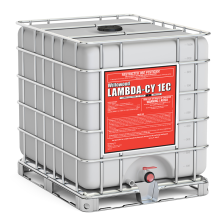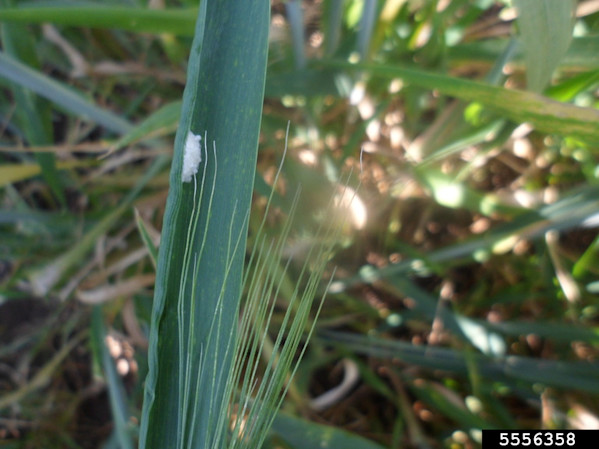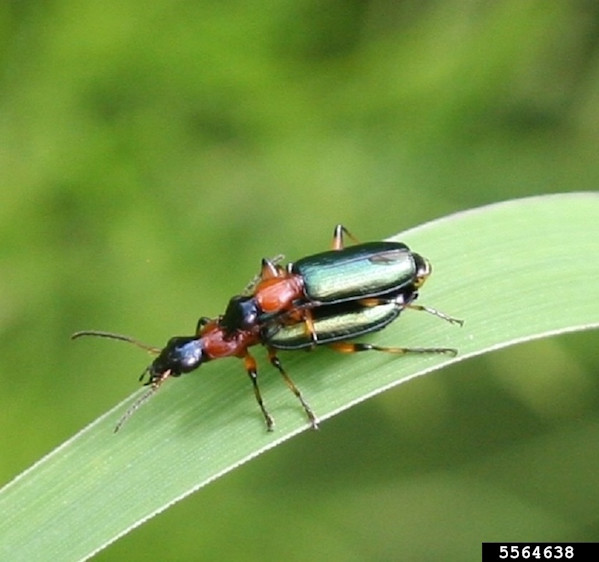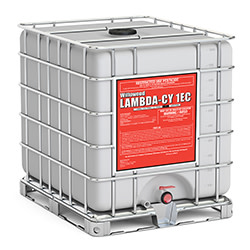How to Identify Cereal Leaf Beetles
Adult beetles are approximately 4-5 mm long (about the size of a small grain of rice) with metallic blue-black wing covers that shimmer in the sunlight. One of the key features that sets them apart from other beetles is their distinct yellow-orange head and legs, which create a striking contrast against their dark body. This vibrant coloration makes them easily distinguishable, even from a distance.
Cereal leaf beetle larvae are slender and elongated, resembling tiny green worms. They have a yellowish-green body with a dark head capsule, giving them a unique appearance.
When scouting for cereal leaf beetles, keep an eye out for adult beetles actively feeding on the leaves, as they leave behind brown, distinct windowpane-like streaks. Also pay attention to the presence of larvae, which can be found feeding on both the leaves and stems of the wheat plants.
(Image Credit: Mourad Louadfel, Bugwood.org)




